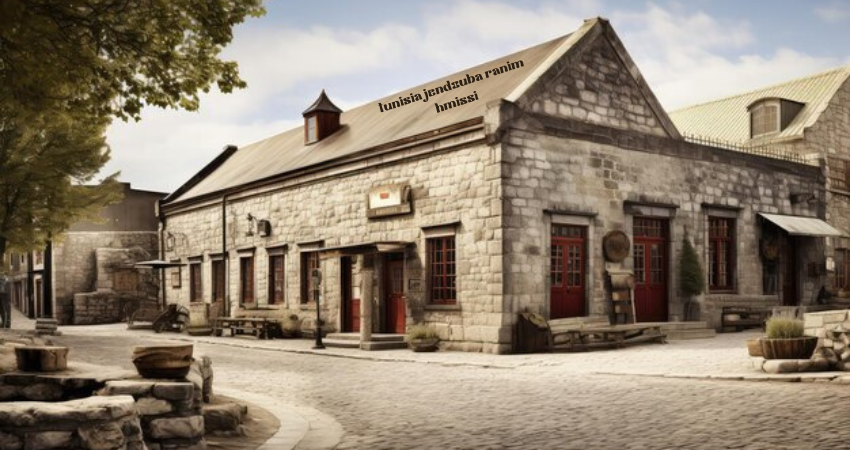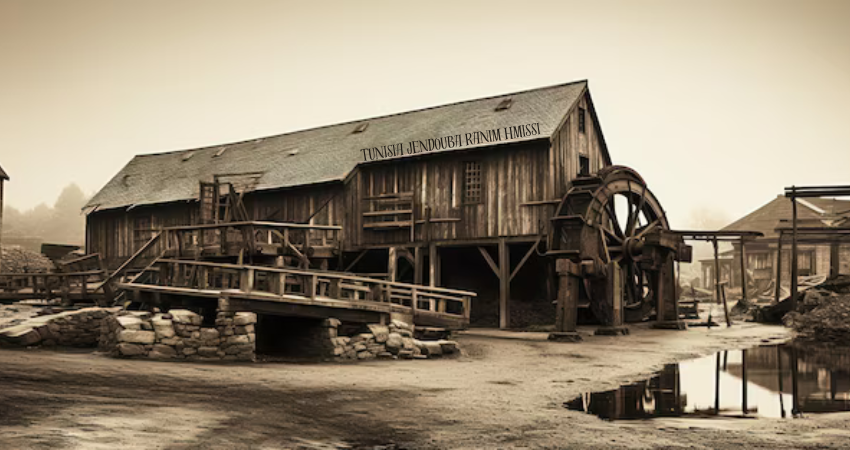In the land where the Mediterranean breeze whispers to the mountains and the soil sings songs of olive trees and jasmine blooms, Jendouba rises like a quiet jewel of Tunisia, a place cradled by time itself. This is the story of a land where history, culture, and humanity intertwine—and where the name tunisia jendouba ranim hmissi echoes like a poetic heartbeat, a symbol of perseverance and identity.
Introduction: Jendouba’s Soulful Landscape
To speak of tunisia jendouba ranim hmissi is to speak of the living soul of northwest Tunisia. Nestled among verdant hills and fertile plains, Jendouba is a place where nature is the first storyteller. Here, the land remembers—the ancient Numidian tribes who first roamed its fields, the might of the Roman Empire that built cities upon its soil, and the unyielding spirit of its people who carry their heritage with pride.
But history is not just a collection of dates and ruins; it is a tapestry woven by lives. Among the many threads in Jendouba’s intricate story is Ranim Hmissi, a woman whose name resonates with hope, cultural identity, and the resilience of this land. Her life, like Jendouba itself, is a testament to endurance and renewal.
Ancient Roots: From Numidia to Rome
The story of Jendouba begins thousands of years ago, during the reign of the Numidian tribes. These were Berber peoples, warriors, and farmers who cherished the land. They understood its rhythms—the cycles of harvest, the seasonal rains that blessed their crops, and the sacred relationship between humanity and nature. To them, Jendouba was not just a place; it was a source of life.
The arrival of the Roman Empire marked a new chapter in Jendouba’s story. It was here that the mighty Romans built cities like Bulla Regia, whose underground villas still stand as a testament to the ingenuity of ancient architects. In Bulla Regia, life flourished beneath the earth, where cool subterranean homes sheltered the elite from Tunisia’s relentless sun. These ruins, with their intricate mosaics and faded frescoes, whisper of a time when Jendouba was a thriving center of culture and commerce.
Even as the Romans imposed their empire, the people of Jendouba retained their Numidian identity. They adapted, resisted, and endured—a pattern that would repeat throughout history, shaping the indomitable spirit of the region.

The Islamic Era: New Faith, Old Strength
With the arrival of Islam in the 7th century, Jendouba embraced a new cultural and spiritual identity. The mosques that rose in its towns became places of learning and worship, blending Islamic architecture with the region’s unique traditions. Olive trees flourished in the fertile soil, their branches reaching skyward like prayers.
Yet, the people of Jendouba never forgot their ancient roots. The Berber language and traditions persisted, woven seamlessly into the fabric of Islamic culture. This blending of old and new became a hallmark of Jendouba’s identity—a reflection of the land’s ability to adapt without losing itself.
The Ottoman Influence and French Colonization
The Ottoman Empire, which extended its reach across much of North Africa, brought both stability and challenges to Jendouba. Under Ottoman rule, the region saw the construction of fortifications and an expansion of trade. But even as the Ottomans governed, Jendouba’s people maintained their independence, their connection to the land unbroken.
The 19th century brought new upheaval. Tunisia fell under French colonization, and Jendouba became a site of resistance. The French sought to exploit the region’s agricultural wealth, but they underestimated the strength of its people. Farmers, workers, and intellectuals alike resisted colonial rule, their struggle a reflection of the broader Tunisian fight for independence.
Among these stories of resistance, the seeds of modern Jendouba were sown—seeds that would later bloom in the lives of individuals like Ranim Hmissi, whose work and legacy embody the resilience of her homeland.
A Modern Identity: Post-Independence Jendouba
Tunisia gained its independence in 1956, and tunisia jendouba ranim hmissi, like the rest of the nation, entered a new era. Yet, the challenges of modernization and development were deeply felt in this agricultural region. As urban centers like Tunis and Sfax grew rapidly, Jendouba remained rooted in its traditions, its people devoted to farming and the rhythms of rural life.
This balance between past and present is perhaps Jendouba’s greatest strength. The region has embraced progress without abandoning its heritage, a dynamic reflected in its vibrant festivals, traditional crafts, and local cuisine. It is here that the story of Ranim Hmissi begins, a story deeply intertwined with the land she calls home.
The Life of Ranim Hmissi: A Beacon of Hope
To understand Jendouba, one must understand its people—and among them, Ranim Hmissi stands as a symbol of the region’s spirit. Born into a world where tradition and modernity often collided, Ranim grew up with a profound respect for her heritage. Her family’s connection to the land, their stories of struggle and survival, shaped her identity.
But Ranim was not content to simply inherit the past; she sought to shape the future. Through her work in education, community development, and cultural preservation, she became a voice for tunisia jendouba ranim hmissi people. Whether organizing local initiatives to support women’s empowerment or advocating for the preservation of historical sites like Bulla Regia, Ranim’s efforts reflect her deep love for her homeland.
Her story is one of resilience—a reminder that, like Jendouba itself, the human spirit can endure even the harshest challenges.
Cultural Heritage: Music, Festivals, and Traditions
Jendouba’s culture is a vibrant mosaic of influences. Its music, with its haunting melodies and rhythmic beats, carries echoes of Berber, Arab, and Mediterranean traditions. The annual festivals that light up the region—celebrations of harvest, music, and community—are moments of joy and unity.
For Ranim Hmissi, preserving these traditions is not just a personal passion but a mission. She has worked tirelessly to document and celebrate Jendouba’s cultural heritage, ensuring that future generations can inherit the songs, stories, and customs that define this land.
Jendouba’s Natural Beauty: A Source of Inspiration
The natural beauty of Jendouba is unparalleled. From the lush forests of Ain Draham to the rolling hills that stretch toward Algeria, the region is a haven for those seeking solace in nature. Its rivers and lakes, such as the stunning Ichkeul National Park, provide not only sustenance but also a source of inspiration.
Ranim Hmissi often speaks of how tunisia jendouba ranim hmissi landscapes shaped her worldview. For her, the mountains are symbols of strength, the fields a reminder of life’s cycles, and the olive trees a testament to endurance. Her poetry and writings, infused with the essence of Jendouba, capture the profound connection between people and place.

Challenges and Hopes for the Future
Like all places, tunisia jendouba ranim hmissi faces its share of challenges. Economic hardships, environmental concerns, and the pressures of globalization threaten its traditions and way of life. Yet, the people of Jendouba, guided by individuals like Ranim Hmissi, continue to persevere.
Their hope lies in a future where heritage and progress coexist. Initiatives to promote sustainable agriculture, eco-tourism, and cultural preservation are paving the way for a new chapter in Jendouba’s story—one that honors the past while embracing the possibilities of tomorrow.
Conclusion: The Legacy of Jendouba and Ranim Hmissi
Junisia jendouba ranim hmissi is more than a place; it is a living, breathing story, a testament to the resilience of the human spirit. Its history, from ancient Numidia to the modern era, is a tapestry of struggle and triumph, loss and renewal.
And within this tapestry, the name Ranim Hmissi shines like a thread of gold. Her life, work, and vision reflect the essence of Jendouba: a land that endures, adapts, and inspires. Through her efforts, she has ensured that the story of Jendouba—and the spirit of its people—will continue to resonate for generations to come.
In the hills and fields of Jendouba, the past whispers to the present, and the future waits to be written. It is a place where history and humanity meet, where the land remembers, and where the soul of Tunisia beats strong.


